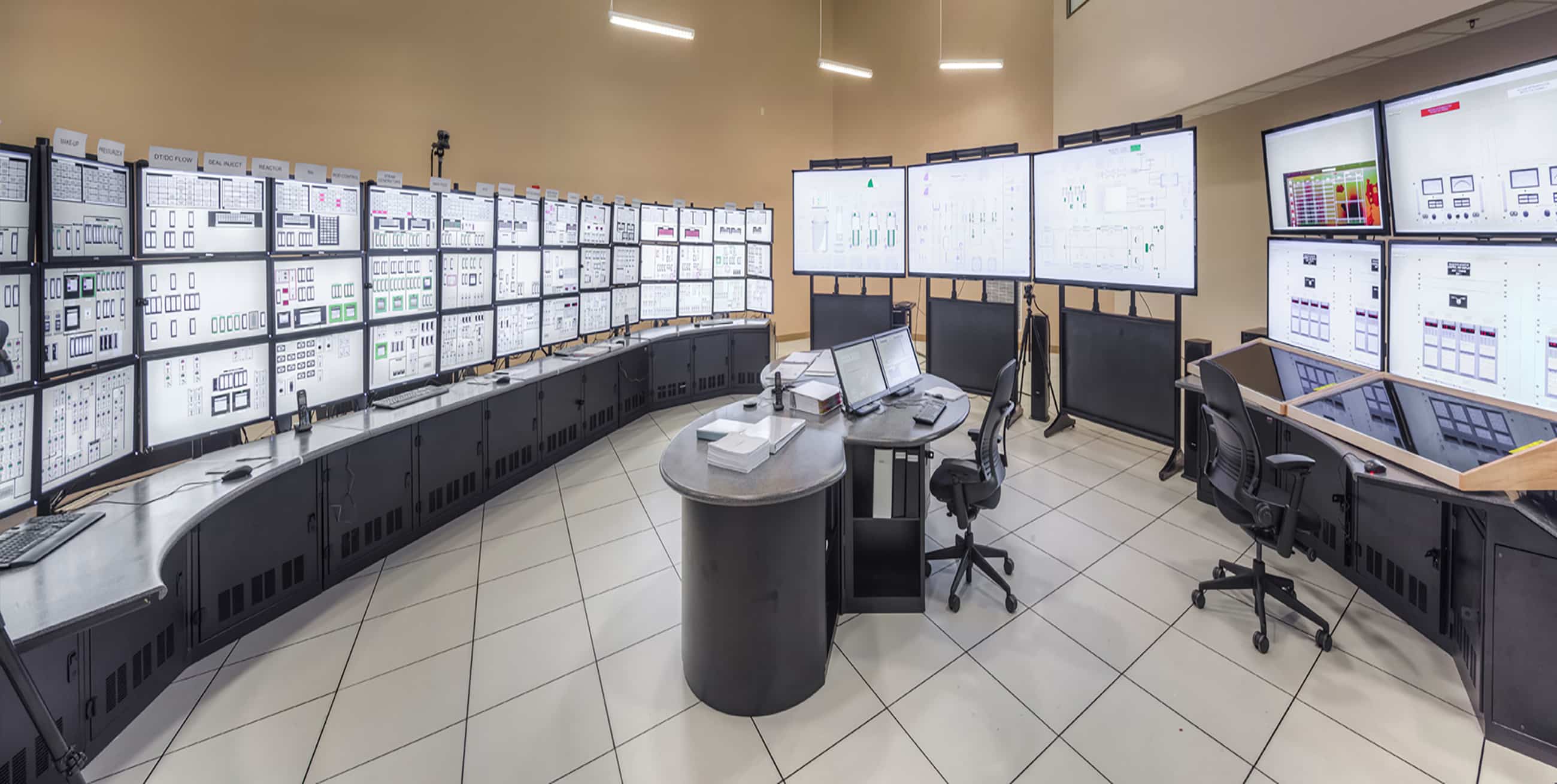
WINSTED DESIGNS MODULAR CONSOLES TO AID IN RESEARCH AND DEVELOPMENT
The control room is the central nervous system of the nuclear power plant. As aging plants in the United States face licensing renewal and the next generation of plants seek approval, more research and education is needed into new control room technology.
The shift from analog to digital controls will create significant changes in the way nuclear plants are operated. Most of the control rooms in the existing fleet of plants were built in the 1970s and are still using the same hard control panels, lights and dials of that era. The next generation of control rooms will be completely different, with flat panel monitors and digital instrumentation and control (I&C) systems.
While there are many simulator rooms for training on the existing fleet of control rooms, until recently, there has been no facility in this country to do research and product development for the next generation of nuclear control rooms.
The nonprofit Center for Advanced Engineering Research (CAER) and the University of Virginia, together with local industry partners and other universities, have created the Center of Safe and Secure Nuclear Energy (CSSNE) to research these emerging control room technologies and educate the next generation of control room operators.
At the center of the CSSNE is the Reconfigurable Main Control Room Simulator (RMCRS), a 2,700 square foot facility designed to be a reconfigurable control room researching the modernization of existing control rooms and the design of next-generation control rooms.
The configurable control room simulator will enable researchers to evaluate different concepts and ideas across a broad spectrum of reactor designs, ranging from small modular reactors to next generation reactors. Researchers will look at digital instrumentation and control systems, cyber security and human factors that go into the successful operation of a nuclear plant.
The RMCRS includes a number of features crucial to the configurability aspect of the control room simulator, including reconfigurable modular consoles. “The easy way to do it would have been to just put a bunch of computers up on tables,” said Bob Bailey, executive director of CAER. “But we wanted to create a room that would simulate not just the decisions operators would have to make, but what the room would look like in order to analyze the human factors aspect of control room operation.”
The control room console is where I&C systems and human operators come together in a human-machine interface. Digital technology makes it possible for operators to access controls through keyboard instead of standing at control boards, a significant shift in the way they work. Effective control room design considers both form and function to create workspaces that facilitate the complex interaction between operators, technology and the environment.
In order to study the interactions between the operators and the controls in a variety of control room settings, the consoles selected for the simulator needed to be flexible. CAER chose Winsted Corporation to be the manufacturer. “We wanted the ability to take the consoles apart and put them back together again in different configurations and still have them look like the real thing,” said Bailey. “Winsted was best able to meet our need for reconfigurability.”
The consoles are uniquely designed to be modules, which can be taken apart and put together again in different configurations. The consoles can be arranged for single or multiple operators in “W” shaped, “U” shaped, straight or various other configurations. Each console module can accept from one to five 24-inch monitors and features Winsted’s unique Versa-Trak monitor mounting system, which allows users to easily modify sightlines and monitor viewing angles based on individual needs.
Another requirement for the console design was that they conform to the Nuclear Regulatory Commission (NRC) NUREG standard 0700 “Human-System Interface Design Review Guidelines.” Winsted Corporation had significant experience working with NUREG guidelines over the years and was able to provide CAER with consoles that were both reconfigurable and compliant with the standard.
When experiments begin in 2014, an observation room next to the simulator will enable researchers to watch experiments taking place in the RMCRS and collect data on human performance in the control room. Safety is a chief concern for nuclear power plants and a primary focus of control room design. Winsted Corporation’s ergonomic approach to the design of Modular Control Workstations and the various layouts of the RMCRS control room will aid researchers in achieving safety and performance objectives set for tomorrow’s nuclear power plant control rooms.


